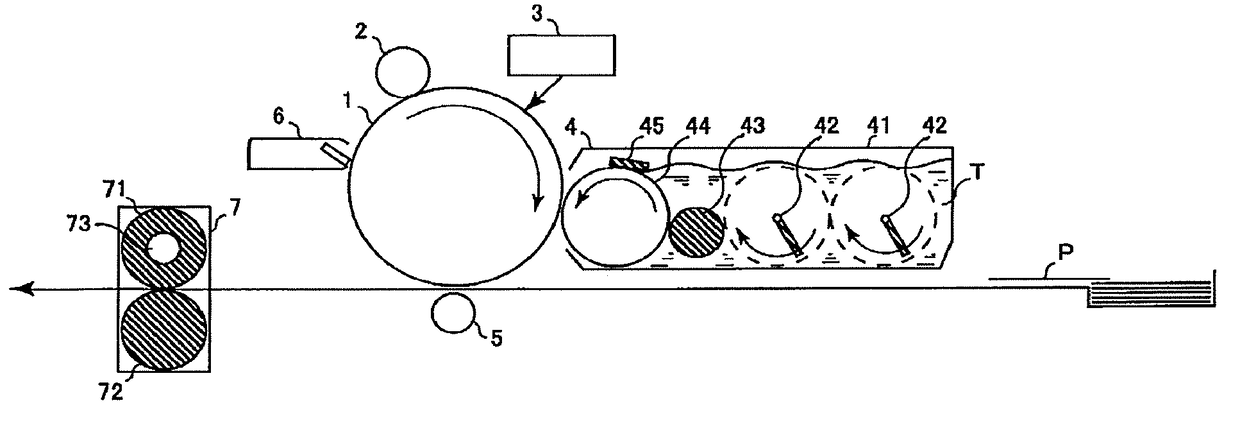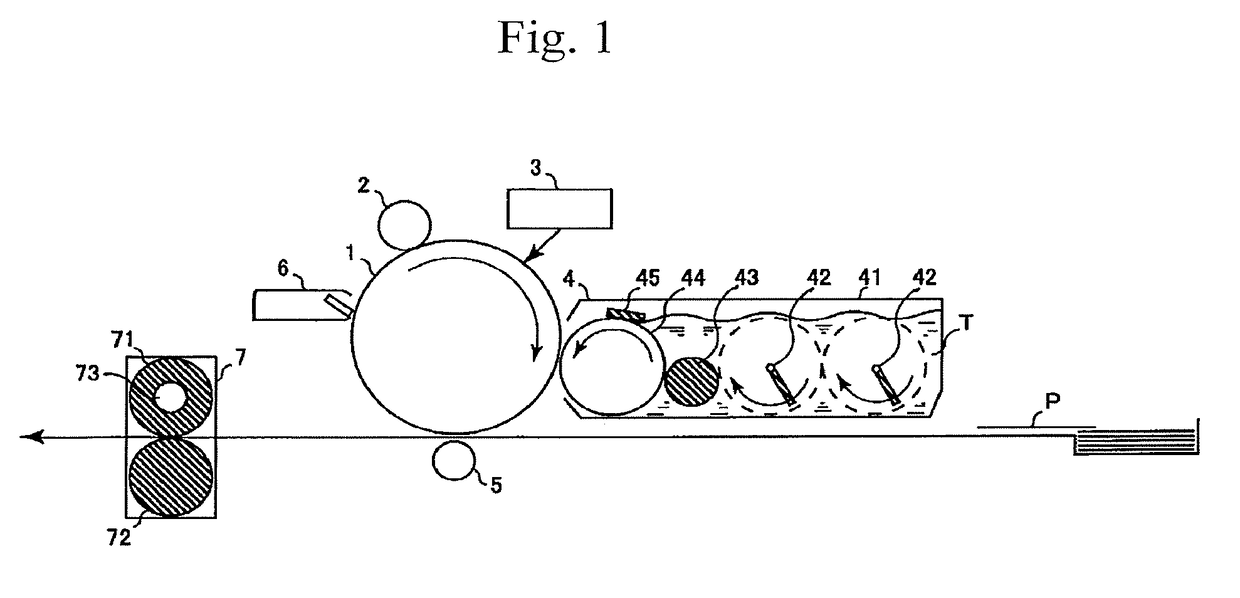Electrophotographic photoreceptor and image forming apparatus
- Summary
- Abstract
- Description
- Claims
- Application Information
AI Technical Summary
Benefits of technology
Problems solved by technology
Method used
Image
Examples
first embodiment
Polyester Resin of First Embodiment
[0041]A photosensitive layer of an electrophotographic photoreceptor to which this embodiment is applied contains a polyester resin including at least one dihydric phenol residue selected from the dihydric phenol residues represented by Formulae (1) to (3).
[0042]In formula (1), R1 represents a hydrogen atom, an alkyl group having 1 to 20 carbon atoms which may have a substituent, an alkoxy group having 1 to 20 carbon atoms which may have a substituent, an aromatic group having 1 to 20 carbon atoms which may have a substituent, or a halogen group, and n1 represents an integer of 0 to 4.
[0043]The number of carbon atoms referred to here is the number of carbon atoms in the entire group including a substituent. Examples of the substituent of R1 include an alkyl group, an alkoxy group, and a halogen atom, but R1 preferably does not have a substituent.
[0044]Specific examples of the alkyl group having 1 to 20 carbon atoms which may have a substituent incl...
second embodiment
Polyester Resin of Second Embodiment
[0095]A polyester resin to which the production method according to the present invention is applied has a repeating unit represented by Formula (1a) and a repeating unit represented by Formula (2a).
[0096]In Formula (1a), X1a represents a divalent group represented by Formula (3a), and Y1a is a divalent group. In Formula (2a), X2a is a group including a divalent aromatic group. Y2a is a divalent group. However, X2a and X1a are not the same group.
[0097]In Formula (3a), R1a and R2a each independently represent a hydrogen atom, an alkyl group having 1 to 20 carbon atoms which may have a substituent, an alkoxy group having 1 to 20 carbon atoms which may have a substituent, or an aromatic group having 1 to 20 carbon atoms which may have a substituent. The number of carbon atoms referred to here is the number of carbon atoms in the entire group including a substituent. Examples of the substituent of R1a and R2a include an alkyl group, an alkoxy group, a...
third embodiment
Polyester Resin of Third Embodiment
[0142]The structure of the polyester resin produced according to the present invention is not limited to a particular structure, but from the standpoints of solubility, mechanical properties, and electrical properties, the polyester resin produced according to the present invention preferably has a structure shown below. In a case of using at least two kinds of dicarboxylic acid chlorides, or in a case of using at least two kinds of dihydric phenols or dihydric alcohols, the production method of the polyester resin is effective. The term “kind” referred to here is used to distinguish molecular structure so as to treat the positional isomers and stereoisomers as distinctive kinds.
[0143](Dicarboxylic Acid Residue)
[0144]The polyester resin preferably has at least one dicarboxylic acid residue represented by Formulae (1b) to (4b).
[0145]In Formula (1b), R1b's each independently represent an alkyl group having 1 to 10 carbon atoms, an alkoxy group having...
PUM
| Property | Measurement | Unit |
|---|---|---|
| Mass | aaaaa | aaaaa |
| Mass | aaaaa | aaaaa |
| Mass | aaaaa | aaaaa |
Abstract
Description
Claims
Application Information
 Login to View More
Login to View More - R&D
- Intellectual Property
- Life Sciences
- Materials
- Tech Scout
- Unparalleled Data Quality
- Higher Quality Content
- 60% Fewer Hallucinations
Browse by: Latest US Patents, China's latest patents, Technical Efficacy Thesaurus, Application Domain, Technology Topic, Popular Technical Reports.
© 2025 PatSnap. All rights reserved.Legal|Privacy policy|Modern Slavery Act Transparency Statement|Sitemap|About US| Contact US: help@patsnap.com



